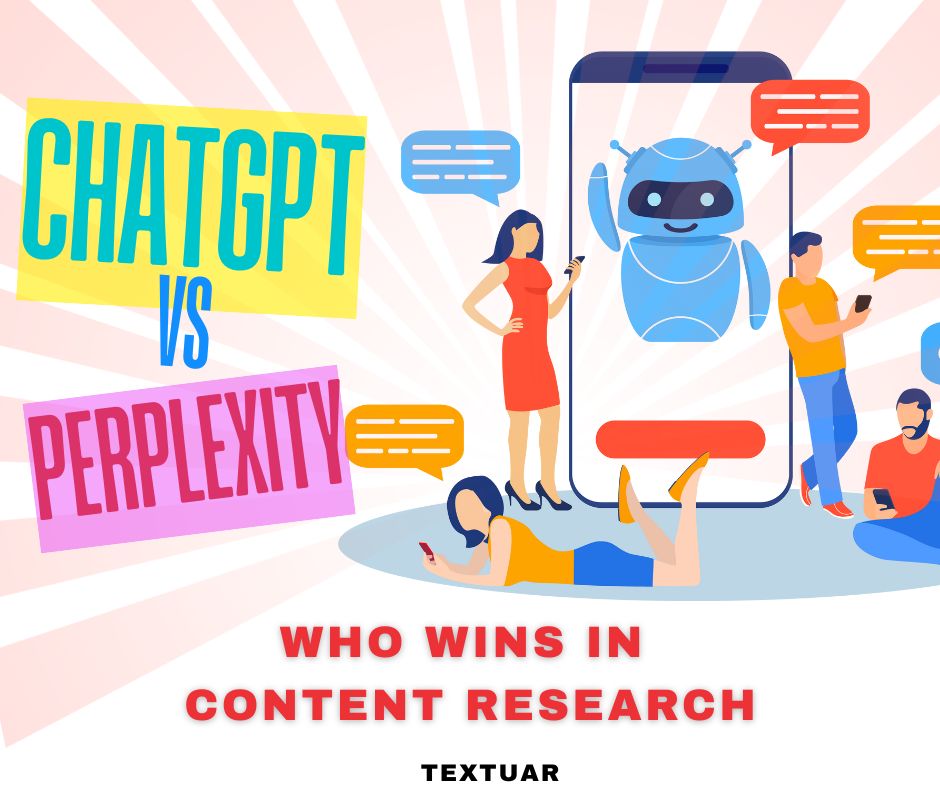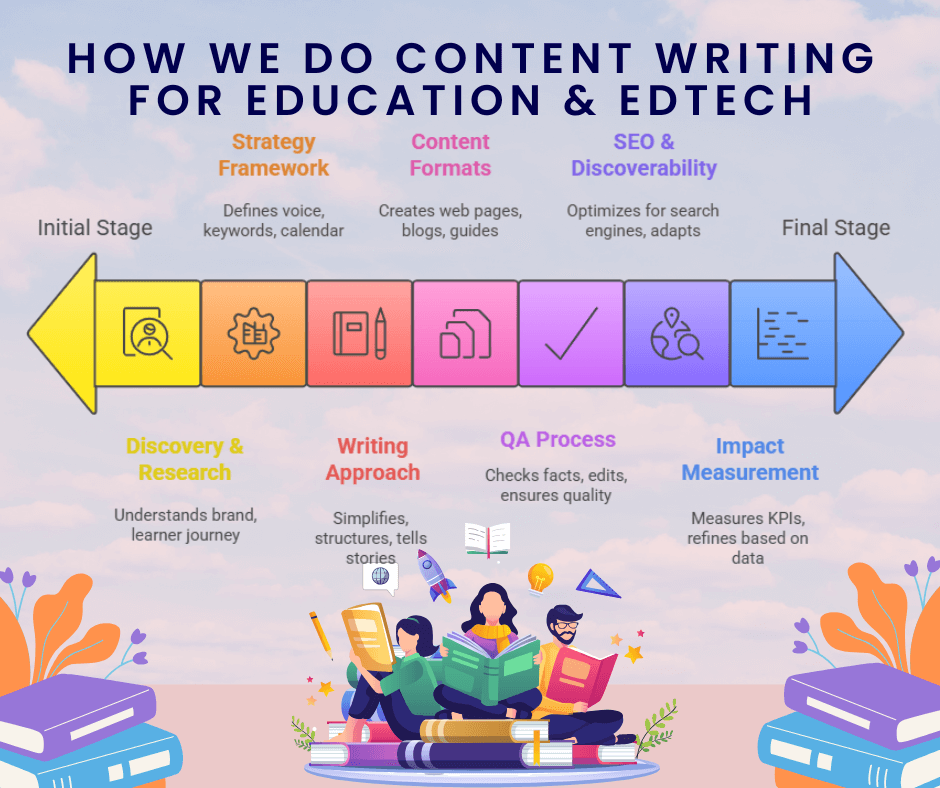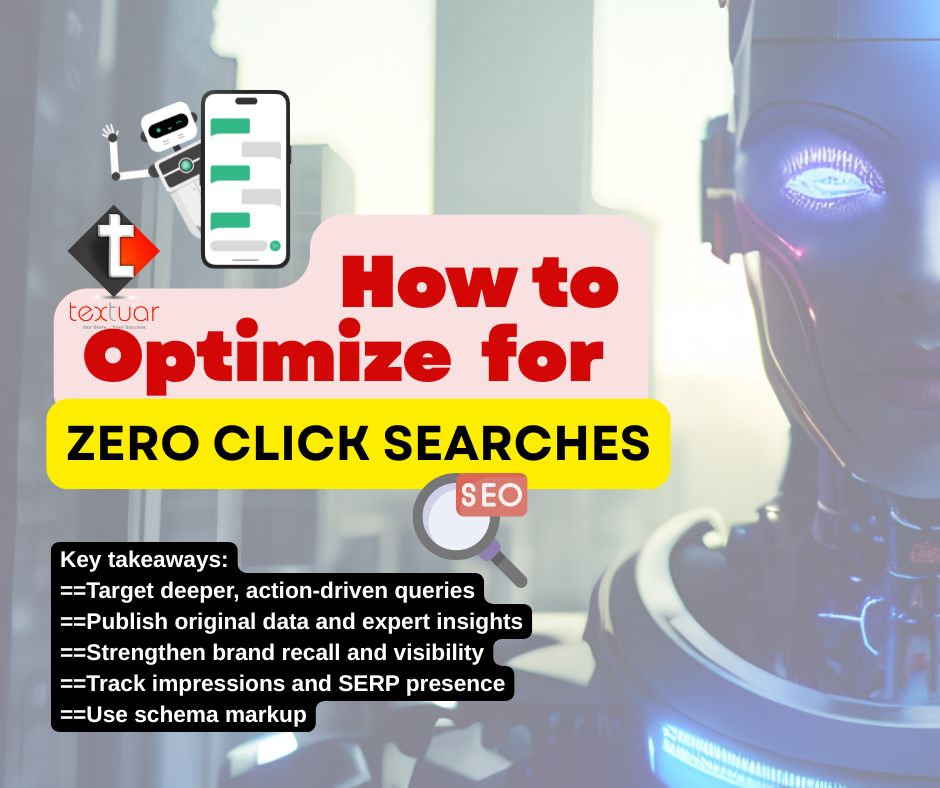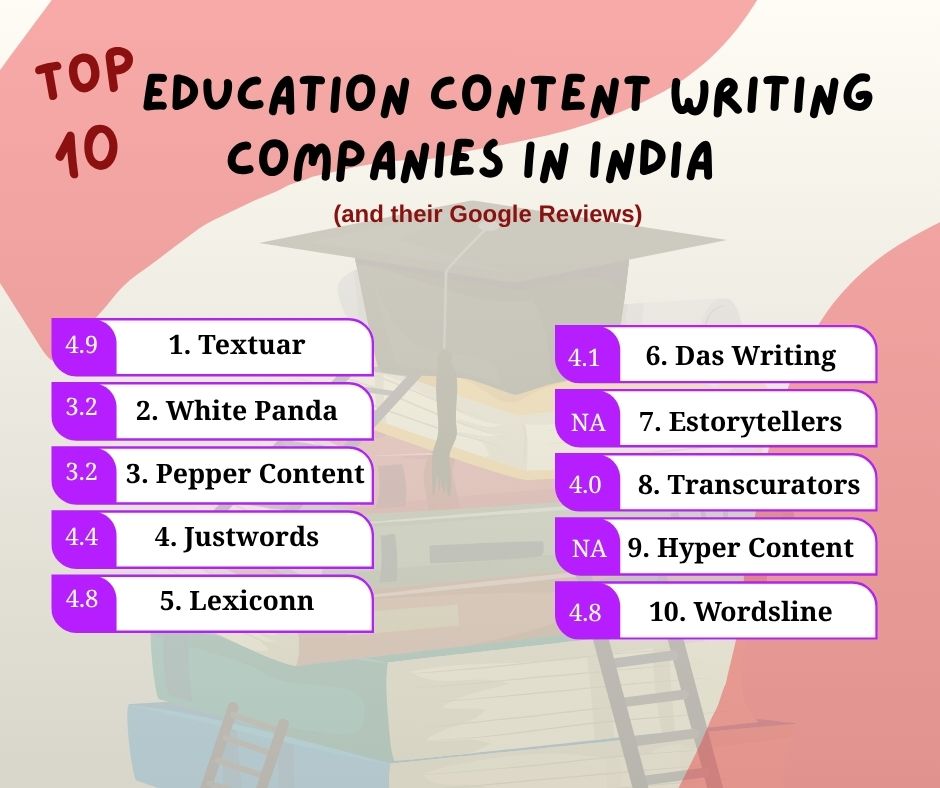📌 TL;DR – Quick Summary
This blog compares ChatGPT vs. Perplexity for content research. AI-powered tools like ChatGPT and Perplexity have transformed content research for good. But, how do you know which one makes a better impact?
This blog gives an in-depth look at various nuances of both ChatGPT and Perplexity.
It explores a brief background, followed by the workings of both platforms. Learn the benefits and use cases of each tool, too. By the end, you will have a better idea of whether to use a single platform or combine them for an impactful result.
Have you ever faced a situation where you spent 3-4 hours researching for a blog only to find that half your sources are unreliable or outdated? Well, this was a reality for many marketers until the advent of GPT tools.
Until few years ago, content writers spent multiple hours writing in-depth blogs and articles. And most of this time was spent on research, which included sifting through multiple sites, reading sources, or verifying facts manually. Only after this lengthy process could they begin shaping their findings into structured narratives.
The emergence of AI-powered research has altered this process entirely. Instead of juggling multiple browsers and relying on traditional search engines, you can use tools like ChatGPT and Perplexity.
These AI tools have flipped the content research struggle into a faster and more reliable process.
Not only do these tools help you gather the information, but organize it, too. As a result, you save time. Also, the standard of your produced work enhances, given that it features easily obtained factual information.
But how do you choose between the two choices? Which one truly makes the cut for your content research purposes?
ChatGPT handles over 1 billion queries every day. Perplexity has noticed a 191.9% increase in monthly visitors since the March 2024 figure of 52.4 million. The statistics clearly show how impactful both these tools are.
This blog will take a closer look at ChatGPT vs Perplexity for content research. Let us explore a few critical nuances that clarify how both these tools contribute to more impactful content creation.
What is ChatGPT?
Let us begin us exercise in comparing ChatGPT vs Perplexity for content research with the first tool. ChatGPT stands as a prevalent name in artificial intelligence. It is celebrated for its transformative impact on modern content creation and research workflows.
ChatGPT comes from the renowned GPT (Generative Pre-trained Transformer) family. OpenAI designed and trained these models on vast, multilingual datasets drawn from multiple sources.
The introduction of ChatGPT proved to be a major milestone in making AI accessible to the general public. It has particularly transformed fluency, creativity, and a capacity for nuanced dialogue. Adoption rates soared as businesses and individuals rapidly discovered how ChatGPT could accelerate brainstorming and drive deeper audience engagement. There is nothing wrong with saying that ChatGPT has become a household name for AI writing assistance.
Evolution of ChatGPT
Every new release made by OpenAI in terms of ChatGPT has only evolved the tool. With each update, you could notice changes made as per market needs and advances in AI research.
– GPT-3.5: This prominent version brought to the fore ChatGPT’s conversational flair. It made AI dialogue more engaging and natural. Writers were able to develop relatable and authentic-sounding text at speed.
– GPT-4: OpenAI next delivered significant advances in accuracy and context memory. Even reasoning skills were improved at this level. ChatGPT 4 could better remember earlier parts of a conversation. And that reduced repetition. The output became logically consistent throughout longer writing tasks.
– GPT-5: In August 2025, OpenAI introduced GPT-5. This model is a major leap forward that fused enriched reasoning with true multimodal capabilities. That means ChatGPT can now understand not just text but also images. It can handle mixed media formats.
How to Use Perplexity for Content Research?
Marketers and content creators increasingly turn to ChatGPT as one of the go-to AI research assistant tools because –
1- Idea Generation
The most valued strength of ChatGPT is its brainstorming abilities. Within seconds, you expect it to give you outlines, blog structures, and even topic lists. This rapid ideation boosts creative output. It also reduces mental blocks. That means you can move to new directions sans delays.
2- Simplification
ChatGPT has an incredible ability to distil complex research into clear insights. It can simplify dense content into brief summaries or key findings. This, in turn, makes communication easier between experts and non-specialists.
3- Better SEO Support when Comparing ChatGPT vs Perplexity for Content Research
ChatGPT is a good tool for content experts who aim to optimize content assets for answer engines or search engines. It can recommend relevant keywords and craft enticing meta descriptions. It can also produce titles and highlight subtopics as per SEO strategies.
4- Tone Adjustment
Adaptability in voice is another reason why ChatGPT is a go-to content creation tool. From formal reports to conversational blog entries, ChatGPT can do it all. In fact, the model can seamlessly shift tone on request mid-conversation.
Limitations of ChatGPT
Despite being a notable tool for content creation, ChatGPT has its limitations. Here are things to bear in mind:
– ChatGPT is known to “hallucinate” facts. That means it produces information that appears plausible but is not always accurate or current.
– The flowing, coherent narratives provided by the tool don’t automatically feature citations. You may require third-party plugins to create bespoke integrations.
What is Perplexity?
Perplexity is an advanced, research-focused AI platform. It is constructed to streamline knowledge discovery in both professional and academic settings. Unlike traditional generative models, Perplexity was designed from the outset to serve as a credible research assistant. It integrates with live web data to deliver trustworthy, up-to-date responses. The best part is the clickable citation provided for every statement.
Think of Perplexity as a powerful hybrid. It blends the breadth of a search engine with the speed and summary skills of Modern AI.
How Perplexity Works?
Do you wish to know how to use Perplexity AI? It is very simple. Start by submitting your query. Perplexity will do more than just generate text from its training data. It will actively scan the web and collect information from trusted sites. It will then summarise these findings, presenting every major point with clickable references.
Perplexity empowers you to interactively verify claims and dig deeper. Plus, you can explore related perspectives within the conversational, distraction-free interface.
How to Use Perplexity for Content Research?
There are many reasons why professionals use Perplexity as one of the ChatGPT alternatives for research. Let’s take a look at those below –
1- Fact-checking:
Professionals like Journalists use Perplexity for harnessing valid details before publishing critical news. This simple step helps them ensure reliability and lower the risk of retractions.
2- Academic research:
Students and professors use the platform to rapidly gather source-backed citations. This helps in saving hours that would otherwise be spent cross-referencing academic papers or cutting through paywalled resources.
3- Industry trends:
Consultants and business analysts leverage Perplexity’s instant access to market data and regulatory updates. They even use financial trends to prepare a presentation. Such real-time data helps in meeting tight deadlines without missing the mark on quality.
4- Transparency:
Every answer Perplexity provides also comes with original source links. This instantly fulfils demands for audit trails in compliance-heavy sectors like healthcare, finance, and law.
Limitations Of Perplexity
Perplexity holds the position as one of the robust, source-focused AI research assistant tools. However, it has its fair share of limitations, too.
This tool is known for its accuracy. But it does not add emotional value to the content. The responses are often factual and somewhat dry. As a content creator, you will need to do more editing to add personality, tone, and flow into the final content.
Why Use ChatGPT for Content Research?
ChatGPT facilitates the entire content creation journey with remarkable fluency and contextual awareness. It becomes its strong point when comparing ChatGPT vs Perplexity for content research. Here is a look at the many advantages of using ChatGPT as one of the AI research assistant tools –
1- Creativity and expansion
ChatGPT is capable of turning a small spark of an idea into something substantial. If you are a professional who needs to brainstorm content but struggles with starting points, ChatGPT could be a reliable ally. Give a simple prompt and watch it grow into a structured article or even a detailed report.
2- Versatility
ChatGPT is highly valued for its versatility. It adapts across industries with ease. It can help with projects in marketing, education, and even business communication. This flexibility means the same tool can be applied to differing domains. That, too, without requiring different software.
3- Contextual understanding
ChatGPT can retain details from previous prompts. This permits you to build layered insights through extended conversations. Such an ability to “remember” context makes it possible to refine ideas gradually. You don’t need to start from scratch with each new query. And that is what makes ChatGPT the best AI for writers and marketers.
Here are some use cases for added understanding –
Use case 1 for ChatGPT for Research: Marketing Content
ChatGPT acts as a creative assistant for marketers. It accelerates campaign development. Suppose you are a digital marketer paying attention to the keyword “eco-friendly packaging.” With a properly created prompt, you can obtain –
– A blog outline
– SEO keyword suggestions
– Draft persuasive paragraphs designed to engage eco-conscious readers
This combination of speed and creativity gives marketing teams a head start. It frees up their time. Thereby, permitting the team to focus on fine-tuning strategy and polishing messaging.
Use case 2 for ChatGPT for Research: Business Communication
Executives and managers often need to convey intricate information with clarity and professionalism.
ChatGPT helps with creating polished emails and business reports. People typically rely on it for presentation scripts, too. Its ability to generate content with robust grammar and logical flow saves a lot of time spent editing. This ensures the team communicates more effectively both internally and externally.
Limitations of ChatGPT for Research
– ChatGPT has the ability to generate incorrect or fabricated information.
– Absence of native citations makes it taxing to verify sources without additional efforts.
– Responses vary as per your prompts. This means the results can sometimes feel inconsistent.
Why Use Perplexity for Content Research?
Perplexity has rapidly gained recognition as an ideal AI for fact-based content research. Listed below are some perks of using Perplexity AI review –
1- Always Provides Sources
Perplexity stands out because it is designed to prioritise evidence and reliability. Its defining strength is that it makes available the sources of the information provided. These citations can be checked directly, helping you build trust in the content obtained.
2- Real-Time Updates
Perplexity doesn’t rely only on its pre-trained data. It fetches information from the live web. This means users have access to the most recent statistics and reports. In fast-moving fields where yesterday’s news is already outdated, this capability is especially significant.
3- Efficient Summaries
You no longer have to spend hours scrolling through search results with Perplexity at your fingertips. You can get concise explanations pulled out from credible sources. This streamlined approach saves time and becomes a key factor when comparing ChatGPT vs Perplexity for content research.
Now, let us comprehend a few use cases to grasp the perks better hen looking at a comparison for ChatGPT vs Perplexity for content research.
Use case 1 for Perplexity for Research: Journalism
Accuracy and speed are everything in Journalism. A Journalist covering a breaking news story can ask Perplexity for the latest updates. It will equip you with a fact-based summary complete with linked references. This ensures the articles are timely and verifiable. As a result, the risk of spreading false information drops.
Use case 2 for Perplexity for Research: Academic research
Students can benefit greatly from Perplexity’s citation-first design. In many cases, it becomes a strong point when comparing ChatGPT vs Perplexity for content research. When preparing a thesis or research paper, this tool can equip students with whitepapers, studies, and journal articles. That, too, without the tedious process of opening multiple browsers.
Feature Comparison: ChatGPT vs Perplexity for Content Research
In the process of debating ChatGPT vs Perplexity for content research, understanding how these two tools compare with each other is crucial. Let’s learn about the same below –
1- Accuracy and Reliability
ChatGPT content research tool offers strong contextual understanding and reasoning. However, users need to manually fact-check them.
Perplexity, however, boasts higher reliability. It is because of the real-time updates and built-in citations for every response. This helps you create content that increases trustworthiness.
2- Creativity and Ideation
This is a good point in checking ChatGPT vs Perplexity for content research. ChatGPT is very good at brainstorming and storytelling. And that is what makes it relevant for projects that need diverse expression or imagination.
Perplexity maintains a focused, factual style but with minimal creativity. So, if you need concise, sourced answers, this tool is the way to go.
3- Citations and Fact-checking
In citation and fact-checking, Perplexity leads with automatic sourcing.
ChatGPT, on the other hand, demands that users verify information. You need to add citations manually or via plugins.
4- Ease of use
ChatGPT feels like a natural conversational partner.
Perplexity resembles an AI-powered search engine.
5- Integration and Tools
ChatGPT supports various plugins, APIs, and apps across industries.
Perplexity has very limited integration options. In fact, one can access it only through its web platform.
6- Pricing
Both ChatGPT and Perplexity provide free tiers and paid plans. You will end up unlocking higher query limits and advanced features via paid plans.
Here is a quick recap on the feature comparison of ChatGPT vs Perplexity for content research –
| Feature | ChatGPT | Perplexity |
| Accuracy and Reliability | Strong contextual reasoning but requires manual fact-checking | Higher reliability with real-time updates and built-in citations |
| Creativity and Ideation | Excels at brainstorming, storytelling, and imaginative content | Focused, factual style with minimal creativity |
| Citations and Fact-checking | Users must verify and add citations manually (or via plugins) | Automatic sourcing of citations with each response |
| Ease of Use | Feels like a natural conversational partner | Functions more like an AI-powered search engine |
| Integrations and Tools | Broad support for plugins, APIs, and apps across industries | Limited integrations, mainly accessible via the web platform |
| Pricing | Free and paid plans; paid tiers unlock more features and higher limits | Free and paid plans; paid tiers unlock higher query limits and advanced features |
Pricing Comparison of ChatGPT vs Perplexity for Content Research
| Feature / Plan | ChatGPT | Perplexity |
| Free Tier | Limited daily queries; access to GPT-3.5; slower response time during peak hours. | Free daily searches; includes citations; limited queries per day. |
| Paid Plan (Pro/Plus) | ~$20/month for ChatGPT Plus with GPT-4/5 access, faster speed, priority availability, and advanced reasoning features. | ~$20/month for Perplexity Pro with higher query limits, priority access, unlimited Copilot mode, and enhanced web results. |
| Best For | Writers, marketers, and creators who need creativity, SEO-friendly drafts, and flexibility across industries. | Researchers, journalists, and students who rely on fact-checking, citations, and real-time data accuracy. |
We can see that both tools are equally priced at $20/month but their value depends on what you need most.
- ChatGPT delivers creativity, SEO-friendly drafts and flexible content support.
- Peprlexity offers accuracy in research with citations and real-time data.
You can choose either one of the two by knowing what is your priority.
However, modern marketers combine the best of both for a striking balance of productive bursts with reliability. Let us see how to achieve this balance.
Why Combining ChatGPT and Perplexity Creates the Best Research Workflow?
Rather than being confused between ChatGPT vs Perplexity for content research, choose to mix both the tools. The aim here is to unite their strengths.
For instance, begin gathering verifiable facts using Perplexity. It will equip you with complete citations and live updates.
Once you have the information in place, you can use ChatGPT to transform these findings into polished, engaging narratives suited to the targeted audience. This workflow creates content that is accurate and compelling to read.
Besides, combining tools allows you to create optimal AI tools for content research comparison.
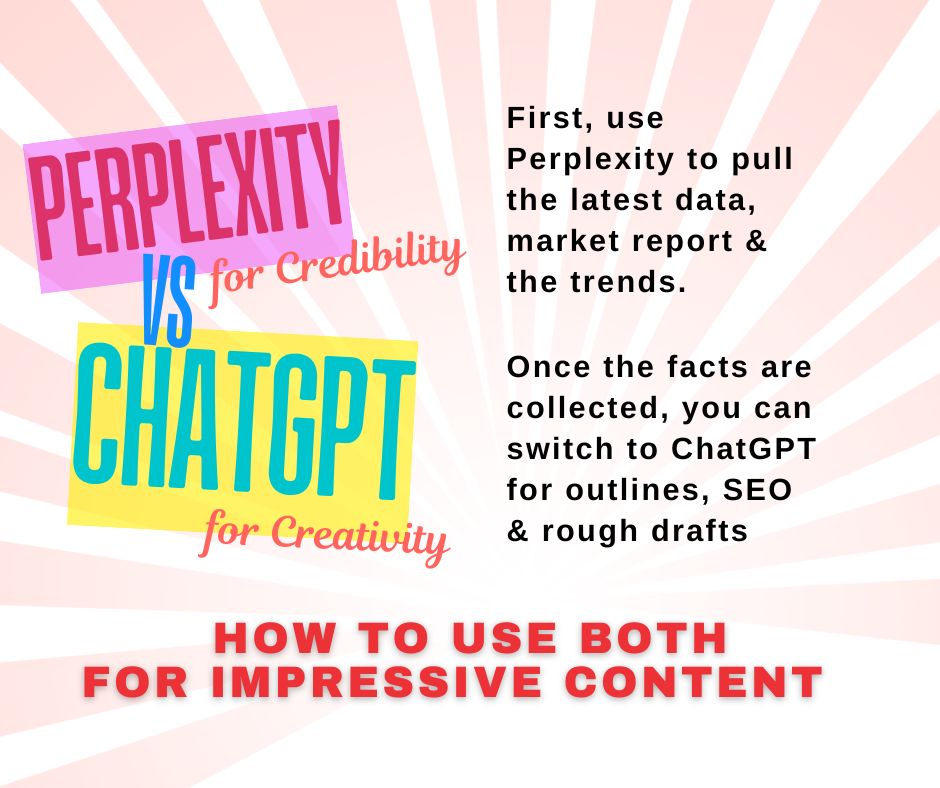
What is an Example of Combining ChatGPT and Perplexity in Content Research?
Using Perplexity followed by ChatGPT gives writers a strong balance of creativity with credibility. Let us cover some examples now.
Example 1 of ChatGPT vs Perplexity for Content Research– Marketing Blog Creation
Let’s assume you are writing a blog on “Content marketing trends in 2026.”
– Use Perplexity to pull the latest data and market report along with the trends.
– Once the facts are collected, you can switch to ChatGPT for outlining the content and extracting medium volume keywords.
Example 2 of ChatGPT vs Perplexity for Content Research– Academic Research Assistance
Let’s suppose a student is working on a thesis – Climate Change Policies.
– She can use Perplexity to find peer-reviewed journal articles and credible articles.
– After collecting the validated sources, she can use ChatGPT to draft summaries and simplify complex terms to make a polished draft.
Experts in content marketing like Textuar suggest keeping in mind one crucial caveat for both examples – Raw, AI-direct content should NEVER be published. The robotic content should have the human touch so that readers get total value for their precious time reading your blog.
Which is Better for Content Research: ChatGPT or Perplexity?
The answer lies in what you need. Do you desire creativity and adaptability across industries? ChatGPT is the stronger option. If your work requires accuracy and transparency, Perplexity is the safer choice.
For overall content research, ChatGPT edges ahead as the all-rounder. It generates polished drafts and adapts easily to multiple use cases. Plus, ChatGPT supports SEO strategies.
You can trust Perplexity for fact-checking with AI tools. However, it can create results that are highly complex and less versatile.
Ending note
ChatGPT and Perplexity provide content writers with two different approaches to AI-driven research. The former one excels at creativity and adaptability. Also, its replies and interface are very engaging. The latter, on the other hand, offers credible and accurate information. It even provides live references.
For a professional content writing company like Textuar, the best choice between ChatGPT vs Perplexity for content research is not just one tool. It is, in fact, a blend of both. You can use Perplexity for the research and factual information, and ChatGPT can act as your content engine.
Connect with us to get the power of using both the tools sensibly.
FAQs
1- Does ChatGPT offer citations?
ChatGPT does not include citations on its own. You will need to validate the information manually or use third-party plugins to obtain reliable references when needed.
2- Is Perplexity better for academic work?
Yes. Perplexity provides citations with every answer. This makes it highly useful for academic writing and research projects. Citation-heavy work can benefit from Perplexity when you compare ChatGPT vs Perplexity for content research.
3- ChatGPT vs Perplexity for content research – Can we use both?
Of course, you can. There are many professionals who use Perplexity and ChatGPT together. The former collects verified facts with resources. The latter can then shape those facts into engaging, readable content. This working process balances accuracy with impact and creativity.
4- Which tool is ideal for SEO content writing?
In the debate between ChatGPT vs Perplexity for content research and SEO, ChatGPT is a stronger choice. It can create SEO-friendly structures and integrate keywords naturally. It can also create persuasive copies, a critical feature for blogs, web content, and digital campaigns.
5- Which tool is easy for me to use as a beginner?
Both tools are easy for first-time users. However, ChatGPT feels more natural to use. It has a conversational interface that makes learning simple. Conversely, Perplexity features feel more like search engines supported by AI-driven summaries.
6- Is Perplexity free to use?
Yes. Perplexity offers a free plan with daily query limits. But for heavier use, the Pro plan provides more searches. Also, it has advanced features for serious research tasks.
7- Is ChatGPT free to use?
ChatGPT has a free tier. However, it comes with a usage limit. Choosing the paid plan allows you to obtain response faster and gain priority during peak times. You also obtain access to the latest model updates.
8- ChatGPT vs Perplexity -Which is better for real-time updates?
Perplexity. It connects to the web directly. That is how it delivers live data and current events. On the other hand, ChatGPT relies on pre-trained knowledge. That means the information might be outdated without external integration.

